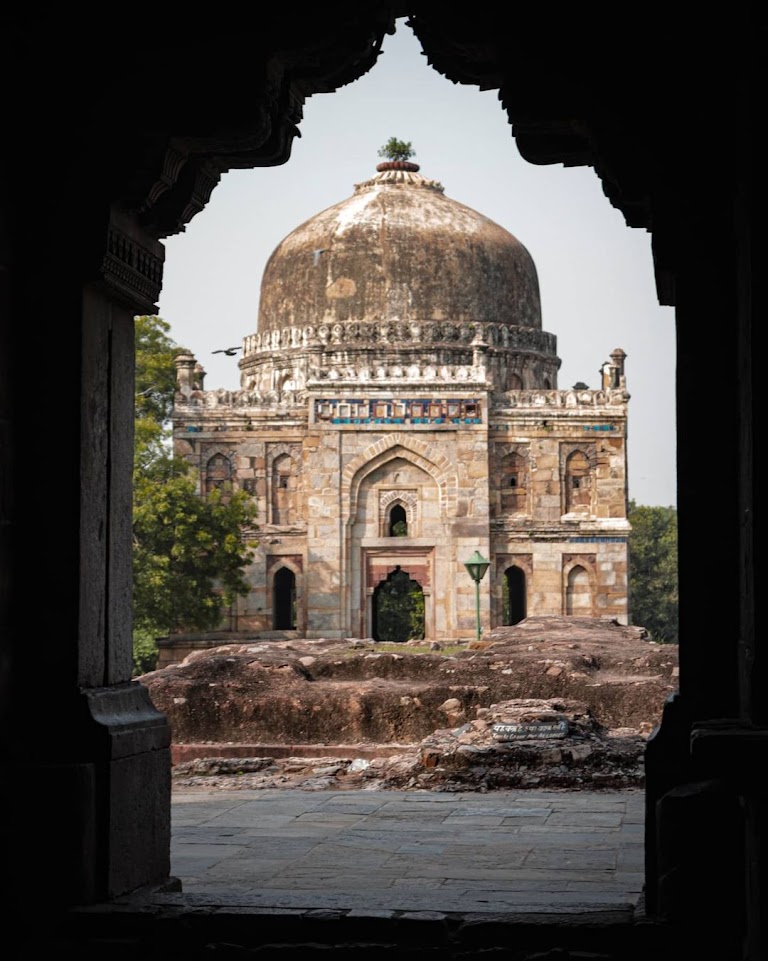
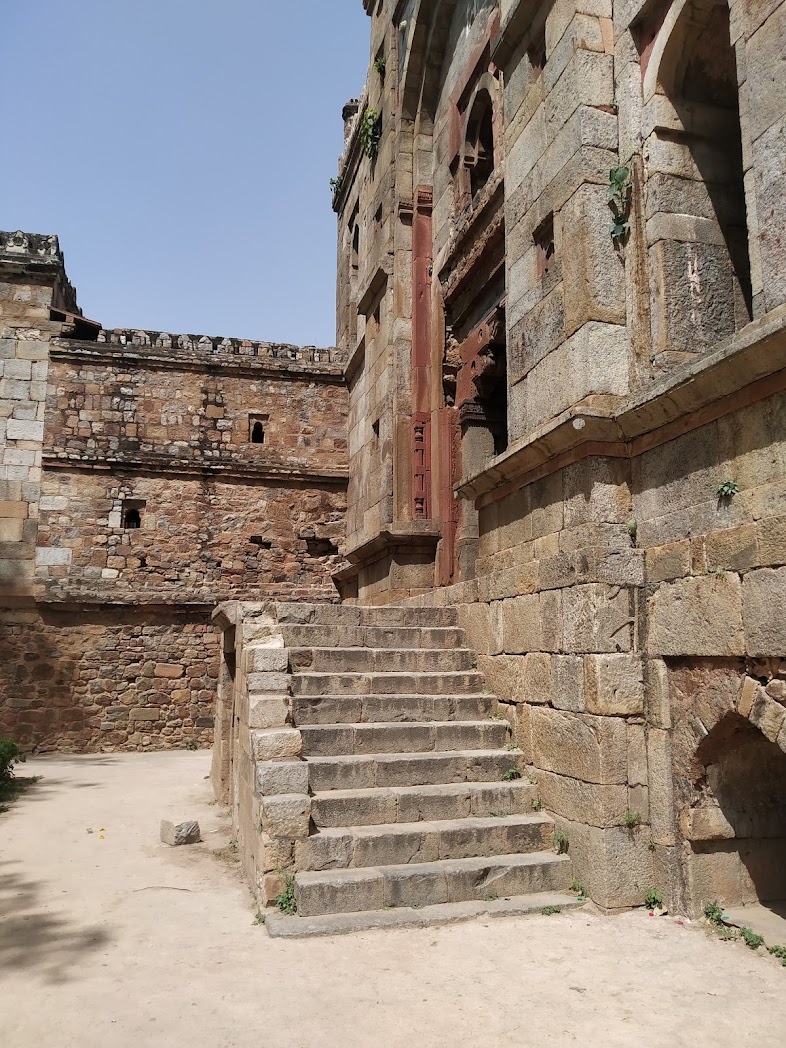
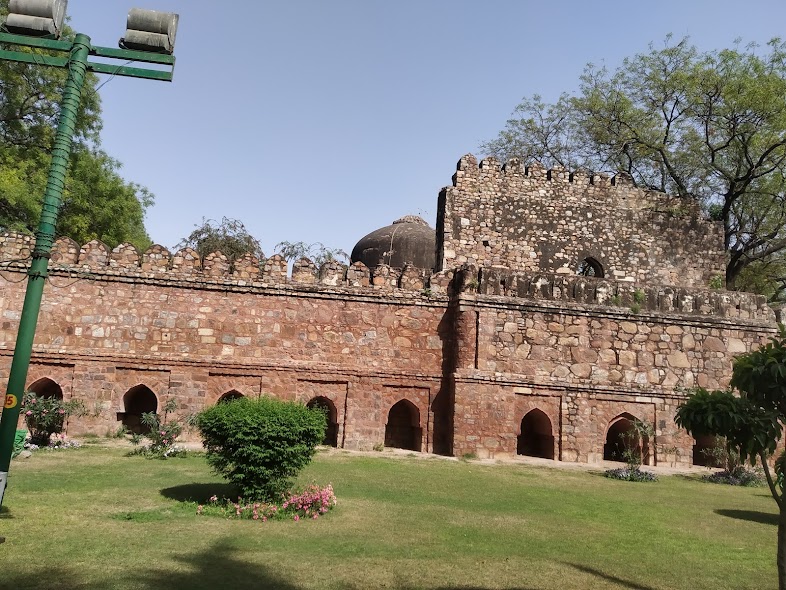
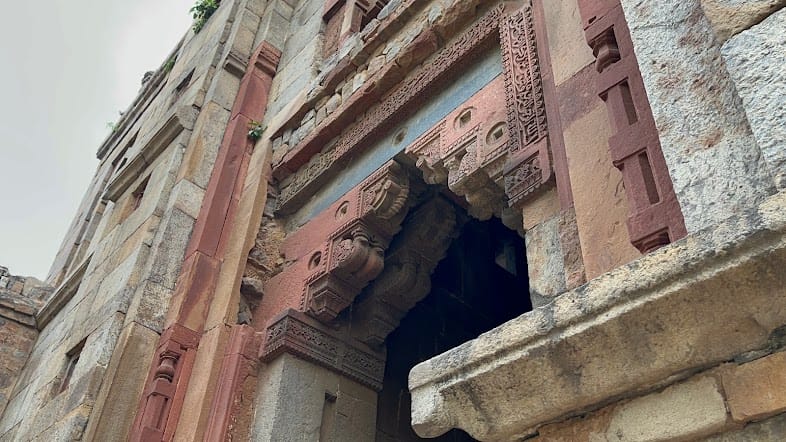
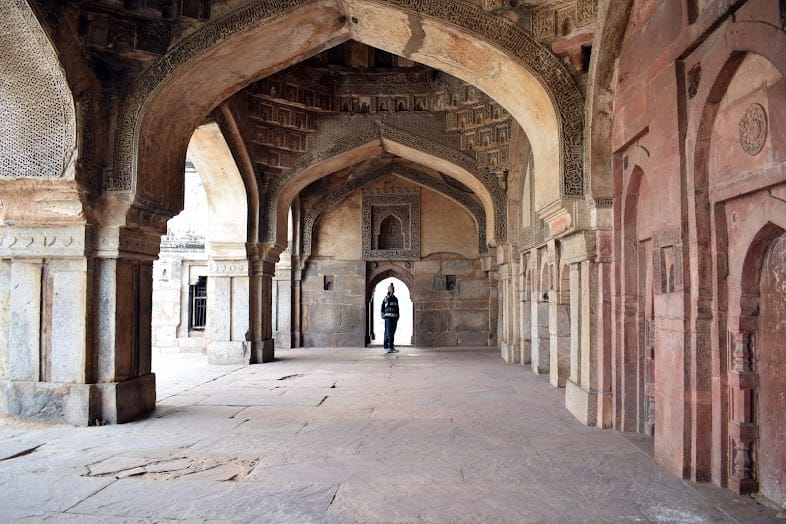
Gumbad, also known as the Glass Dome, is an impressive mausoleum located in the heart of Delhi, India. Constructed during the reign of the Lodi dynasty, which ruled Delhi from 1451 to 1526, this monument stands as a testament to the architectural innovation and artistic sensibilities of the period. Rising to a height of approximately 10 meters, the structure captivates visitors with its striking domed roof, which crowns its single-storey design. The use of red sandstone and marble in its construction exemplifies the intricate craftsmanship typical of the Lodi architectural style, with the outer walls of the monument adorned with elaborate patterns and designs. The central dome, made of white marble, is particularly noteworthy. Adorned with black stone calligraphy and geometric patterns, the dome reflects the deep Islamic influence prevalent in the architecture of the time. Surrounding the main dome are eight smaller domes that provide structural support while enhancing the monument's visual appeal. The overall design combines the simplicity of a single-storey structure with the complexity of intricate architectural features, making it a prominent example of Lodi architecture. What truly sets Shish Gumbad apart, however, is the use of glass tiles, a rare feature in the architectural traditions of Delhi. The interior of the dome is decorated with small blue and green glass tiles that reflect light in a way that creates a shimmering, almost ethereal effect. This unique decorative technique gives the mausoleum its name, “Shish” meaning glass. The structure's walls are also adorned with glass tiles, creating a stunning mosaic that further enhances the visual impact of the monument. The interplay of light and glass gives Shish Gumbad a mystical quality, making it stand out among other monuments from the same period. Though the exact identity of the person buried in Shish Gumbad remains unknown, it is believed to be the tomb of a nobleman from the Lodi court. Some speculate that the mausoleum may have been built to honor a significant figure from the royal family or a high-ranking member of the dynasty’s court, though no conclusive evidence has been found to support this claim. What is certain, however, is that the monument was constructed in the early 15th century during the peak of the Lodi dynasty's power. The architectural and decorative features of the structure suggest that it was meant to be a prestigious burial site, reflecting the status and importance of the individual it was meant to honor. Over the centuries, Shish Gumbad has undergone numerous restorations and renovations, which have helped preserve its historical and cultural significance. In the early 20th century, during the British colonial period, the monument was restored as part of broader efforts to preserve Delhi’s rich architectural heritage. A fence was erected around the structure to protect it from vandalism, ensuring that future generations could continue appreciating its beauty. Subsequent conservation efforts have focused on maintaining the intricate glasswork and restoring the monument’s weathered exterior. Today, Shish Gumbad is a significant historical monument and a popular destination for tourists worldwide. Visitors are drawn to the mausoleum's distinctive architecture and intricate designs, which offer a glimpse into the rich cultural heritage of Delhi and India. The monument is in Lodi Gardens, a lush, landscaped park that houses several other important tombs and structures from the Lodi era. This setting enhances the appeal of Shish Gumbad, allowing visitors to appreciate its beauty in a peaceful and verdant environment. Beyond its historical and architectural significance, Shish Gumbad holds religious importance for many locals. It is often regarded as a Sufi shrine, and visitors come to the site to pray and seek blessings. This aspect of the monument adds a spiritual dimension to its significance, connecting it with the rich tradition of Sufism in India, which has long been associated with tolerance, mysticism, and devotion. The combination of its religious, historical, and cultural importance makes Shish Gumbad a site of profound meaning for both locals and visitors. Shish Gumbad is a striking example of the Lodi dynasty's architectural achievements, showcasing the beauty, sophistication, and innovation that characterized their reign. Its unique use of glass tiles, combined with its elegant structural design, sets it apart from other historical monuments in Delhi. The monument not only reflects the artistic traditions of the time but also stands as a reminder of the Lodi dynasty’s enduring legacy in the architectural landscape of India